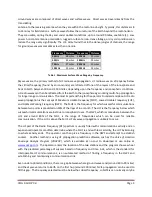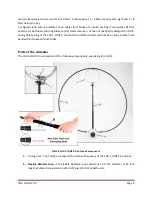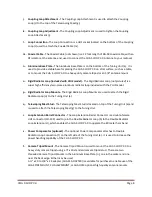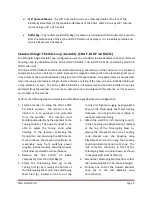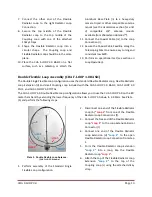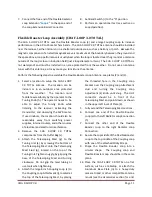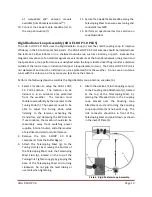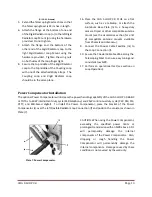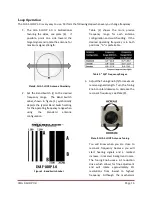
CHA F-LOOP 3.0
Page
4
cost in mind, and is ideal for RVs, hotels, apartments, condominiums, townhouses, and places with
restrictions where it is not feasible to erect a multi-band wire or vertical antenna.
The CHA F-LOOP BASIC 3.0, shown in plate (1), is
comprised of a three-foot diameter flexible
radiator loop, a coupling loop, a specially
designed smaller tuning unit, new-style twist-
lock telescoping mast, and coaxial feedline
–
all
of which fit in the supplied military-style duffel
bag.
The CHA F-LOOP 3.0 PLUS, shown in plate (2), has
all the components and features of the BASIC
model, plus a super high efficiency two-piece
rigid aluminum radiator loop.
The CHA F-LOOP 3.0 TOTAL, not pictured, has all
the components and features of the BASIC
model, plus a larger four-foot diameter booster
flexible loop and coupling loop that improves
performance in the 40
–
15 meter amateur
service bands.
Plate (2). CHA F-LOOP 3.0 PLUS.
The CHA F-LOOP 3.0 does
n’
t require a ground-plane
and doesn’t need to be mounted
up high. Do not use
an antenna tuner or coupler, as it may cause you to mistune the antenna.
Antennas built by Chameleon Antenna
TM
are versatile, dependable, stealthy, and built to last. Please read
this operator’s manual so that you may maximize the utility you obtain from your CHA F
-LOOP 3.0
antenna.
HF Propagation
HF radio provides relatively inexpensive and reliable local, regional, national, and international voice and
data communication capability. It is especially suitable for undeveloped areas where normal
telecommunications are not available, too costly or scarce, or where the commercial telecommunications
infrastructure has been damaged by a natural disaster or military conflict.
Although HF radio is a reasonably reliable method of communication, HF radio waves propagate through
a complex and constantly changing environment and are affected by weather, terrain, latitude, time of
day, season, and the 11-year solar cycle. A detailed explanation of the theory of HF radio wave
propagation is beyond the scope of this operator’s manual, but an understanding of the
basic principles
will help the operator decide what frequency will support their communication requirements.
HF radio waves propagate from the transmitting antenna to the receiving antenna using two methods:
ground waves and sky waves.





